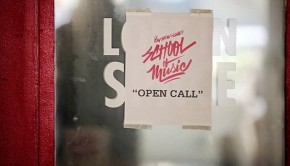The Internet of Things and the Future of Journalism
the Offsetter and Interisland Terminal are hosting DEADLINE: A Journalism Film Series Wednesday through Friday, Jan. 8–10, at R/D. For this series, local journalists, editors, and publishers have written essays responding to the three films featured: Good Night, and Good Luck, A Fragile Trust, and All the President’s Men. At this year’s Consumer Electronics Show, happening right now in Las Vegas, it seems the Internet of Things, or the connectivity given to smart phones, tablets, and PCs to control even the most typical household object, is on deck to be this year’s big trend. Here, Burt Lum looks at how data always was, is, and will be the foundation for true journalism, no matter how advanced or intelligent technology becomes.
The tools of investigative journalism have come a long way since the events depicted in the film, All the President’s Men, screening Friday at DEADLINE: A Journalism Film Series. We now live in an age of smart phones, ubiquitous Internet, and citizens posting to Facebook, Twitter, and Google+. But fundamentally, we experience a similar problem.
Where Bob Woodward and Carl Bernstein had to dig through hard copy receipts and library checkout cards, today’s answers are found under a pile of tweets, emails, and server logs. And if that wasn’t enough, we will soon see the Internet of Things further add to this deluge when infrastructure starts to talk to you, like your plants telling you they need water, or your refrigerator saying you are out of eggs.
We, the public, are being buried by an avalanche of information. Now, just as then, the journalist is responsible for sifting through it, separating the newsworthy from the trivial.
Lately, journalists have noticed an emerging trend in this information landslide. An incredible storehouse of public information is being gathered by the government: data on health, city infrastructure, transportation, energy, tourism, emergency preparedness, budgets, campaign spending, public safety—the list goes on.
What’s especially interesting is how this data can be accessed. In the 1970s, raw data was not easily accessible. Newspapers such as the Washington Post kept libraries of phone books to look up contact info. Web technology has changed this completely. The tedious, sometimes painstaking work of journalists such as Woodward and Bernstein could have been made easier if open data, and particularly APIs, had been available to them.
There is a movement underway in cooperation with the government (federal, state, and city) to liberate this data and make it more accessible in machine readable format. In Hawaii, the State Legislature passed Act 263 for the State of Hawaii, and the City Council created Ordinance 13-39 for the City & County of Honolulu. Tomorrow’s journalist needs to have the skills to make use of these resources. That might mean programming, data analysis, and visualization skills.
Citizen journalists are another trend affecting investigative reporting. Open data tools enable unaffiliated investigators to conduct their own research. An example of this is the work done by Jared Kuroiwa using campaign spending data (heeding Deep Throat’s timeless advice to “follow the money”). These datasets would not be useful to citizens in their raw form. But bring citizen programmers together to read this data and designers to present it, and the result is a very powerful thing.
In and of itself, open data will not revolutionize news. In fact, news is and will continue to be motivated by the same drive so exquisitely captured by Robert Redford’s Woodward and Dustin Hoffman’s Bernstein. It’s only the tools that will change. Open data espouses the values of investigation and transparency more completely than any technological development of our time. With open data, today’s journalists and citizen journalists have a great opportunity to shape our narrative and to understand and make better the world around us.









